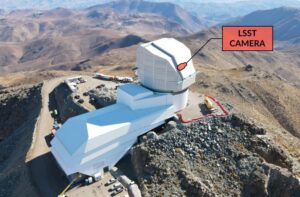 Pin
Pin Photo from Freepik
When you hear about China’s LICOMK++, it might just sound like another tech acronym. But this thing is a beast. It’s a super-detailed ocean simulation system built to model the entire planet’s oceans down to a freakishly small scale — we’re talking 1-kilometer resolution, globally. That’s nuts in the world of climate science.
So, what makes it so special? It’s not just about the tech. LICOMK++ is part of a bigger move by China to take the lead in areas where Western countries usually dominate — like climate modeling, high-performance computing, and predictive science. And it’s doing that by simulating complex ocean behavior in ways we’ve never seen before. It helps answer real-life questions — like why certain regions flood more, how ocean currents influence extreme weather, and what our planet might look like in 20 years.
The world isn’t just watching. Scientists and policymakers are paying close attention.
Table of Contents
The Tech Behind LICOMK++: A Deep Dive into Its Supercomputing Prowess
But how does it pull off this 1-kilometer resolution magic? The secret sauce lies in its supercomputing muscle. This beast runs on China’s top-tier supercomputers, including the ORISE system and the new Sunway supercomputer. We’re talking about harnessing up to 16,000 GPUs on ORISE and nearly 39 million cores on Sunway. That’s some serious firepower.
But raw power isn’t enough. The brains behind LICOMK++ developed custom algorithms and optimized programming strategies to make the most of this hardware. This means the system can crunch massive amounts of data efficiently, simulating complex ocean dynamics like eddies and heat transport with unprecedented detail.
This combination of cutting-edge hardware and innovative software allows LICOMK++ to achieve the holy grail of ocean modeling: simulating one year of ocean activity in just one day. This speed and precision open up new possibilities for climate research and forecasting.
How LICOMK++ Enhances Climate Predictions and Disaster Preparedness
LICOMK++ isn’t just a technological marvel; it’s a game-changer for climate science and disaster management. By simulating ocean dynamics at a 1-kilometer resolution, it captures intricate details of oceanic processes like eddies, heat transport, and current interactions. These factors are crucial for understanding and predicting large-scale climate systems and extreme weather events.
For instance, the ability to model ocean eddies with such precision allows scientists to better predict the development and trajectory of typhoons and marine heatwaves. This means more accurate forecasts, giving communities more time to prepare and potentially saving lives and property. LICOMK++’s detailed simulations can improve our understanding of ocean-atmosphere interactions, leading to better climate models and policies.
LICOMK++’s high-resolution data can aid in coastal planning and marine resource management. By providing a clearer picture of ocean conditions, policymakers can make informed decisions to enhance coastal resilience and mitigate climate-related risks.
LICOMK++ vs. Traditional Ocean Models — Why It’s a Huge Leap
Traditional ocean models? They’re okay, but they work like watching a blurry YouTube video on 240p. Sure, you can make out the shapes, but the fine details? Completely missing. Most global climate models simulate ocean conditions at resolutions of 10 to 25 kilometers. That’s enough to catch broad ocean currents, but too fuzzy to catch fast-changing, small-scale ocean features like eddies, narrow jet streams, or thermal plumes — the kind of stuff that actually drives much of Earth’s climate behavior.
Now compare that with LICOMK++. At 1-kilometer resolution, it’s like going from standard def to 4K ultra-HD. It reveals small and medium-scale ocean activity that was previously invisible in most climate simulations. These seemingly “minor” patterns play a big role in transferring heat, energy, and carbon throughout the oceans. They even influence how quickly the climate warms.
This makes LICOMK++ not just a better model — but a totally different class of simulation. It’s helping researchers make sharper predictions about how the oceans shape storms, droughts, and long-term weather shifts.
China's Supercomputing Power Push and LICOMK++’s Role in It
China isn’t just flexing with LICOMK++ — it’s sending a message. For years, high-performance computing (HPC) was dominated by the U.S. and Europe. But now, China is proving it can not only keep up, but also innovate without relying on Western tech. LICOMK++ is a major part of that narrative. It runs on China’s domestically built supercomputers, like the ORISE system and Sunway’s homegrown architecture — no NVIDIA, no Intel.
Why does this matter? Because U.S. sanctions blocked access to some of the most advanced chips. Instead of slowing down, China leaned harder into developing its own systems — and then used them to run one of the most advanced climate models ever created. It’s like being told you can’t borrow anyone’s tools, so you build your own factory and still outperform everyone else.
This isn’t just about science. It’s about tech sovereignty, and LICOMK++ is now a showcase of what China can do with its own ecosystem — and where global climate modeling might go next.
What Makes 1-Kilometer Global Ocean Resolution So Important
At first, 1 kilometer might not sound like a big deal. But in ocean science, it’s a massive leap. Traditional models with 10 or 25 km resolution simply can’t capture small-scale features like eddies — those swirling currents that transfer heat, nutrients, and energy across the sea. These eddies drive real change in climate systems and weather. They influence how warm water travels, how carbon is absorbed, and even how fish populations move.
By hitting 1-km resolution globally, LICOMK++ can simulate these eddies everywhere — not just in a few select regions. That’s never been done before on this scale. It means climate scientists can finally get a clear look at the detailed workings of the ocean in motion, without smoothing things out too much.
That clarity leads to better predictions. More accurate storm forecasts. Better understanding of marine heatwaves. Deeper insight into how oceans affect rainfall patterns and food security. In short, LICOMK++ doesn’t just simulate water — it simulates the engine behind Earth’s climate in real detail.
LICOMK++ as a Response to Climate Urgency and Policy Gaps
Disasters are happening now, and most of our current models can’t keep up. That’s where LICOMK++ steps in. It’s not just a science experiment; it’s a response to a very real global urgency. Governments and researchers need better tools to predict what’s coming, especially in coastal cities, flood-prone zones, and agricultural regions that depend on seasonal ocean patterns.
LICOMK++ gives policymakers more than just pretty visualizations. With high-resolution data, it can reveal how rising sea levels might behave locally, not just globally. It can track how warm currents will impact monsoons or disrupt traditional fishing areas. That level of localized, accurate forecasting can support smarter decision-making — everything from city planning to disaster insurance.
More importantly, it’s a wake-up call. China is showing that powerful climate tech is possible, and it’s not waiting for international consensus. It’s building tools for its own climate future — and possibly rewriting the rules for everyone else.
Understanding Ocean Currents and Eddies — The Building Blocks of LICOMK++
Ocean currents are massive, steady flows of water that move across vast stretches of the ocean. They act like giant highways, transporting heat, salt, and nutrients from one region to another. These currents influence global climate patterns, weather systems, and even marine ecosystems. Without currents, the world’s climate would be very different — for example, the Gulf Stream keeps parts of Europe warmer than they’d otherwise be.
Eddies, on the other hand, are smaller, swirling movements of water — think of them as ocean whirlpools or swirling pockets that spin off from the main currents. These eddies mix the ocean’s water layers, redistribute heat, and help move nutrients that feed marine life. Although they’re smaller than currents, eddies play a huge role in how energy and materials move through the ocean.
LICOMK++ models both these features in incredible detail at a 1-kilometer scale. Capturing eddies and currents with such precision allows scientists to better understand ocean behavior and how it influences weather and climate. It’s these small and large movements combined that power the ocean’s complex system.
How LICOMK++ Actually Works — The Core Principles Explained
So, how does LICOMK++ do what it does? At its core, this beast runs on the fundamental principles of fluid dynamics and thermodynamics, tailored specifically for oceanic conditions. It solves complex mathematical equations known as Navier-Stokes equations, which describe how fluids (like water) move. These equations are applied over a grid — and here’s where the magic begins.
Most ocean models divide the ocean into large blocks. LICOMK++ divides the entire ocean into much smaller grid cells — just 1 kilometer across. This allows it to calculate things like water flow, salinity, and temperature changes for each little box. By simulating billions of these interactions at once, it models the ocean with incredible precision.
But doing this at a global scale is a computational nightmare. That’s why LICOMK++ is paired with massive parallel processing on supercomputers. It divides the work between millions of cores, solving millions of calculations simultaneously. It’s like having millions of scientists working together in real time, each responsible for one square of the ocean.
Why LICOMK++ Matters Globally — Beyond China's Borders
Here’s the thing — even though LICOMK++ was built by China, its impact doesn’t stop at the country’s borders. Oceans don’t care about national lines, and neither do climate systems. What happens in the Pacific or Indian Ocean can influence storms in the U.S., droughts in Africa, and monsoon patterns in India. That’s why LICOMK++ is a global tool, not just a Chinese achievement.
International researchers are already paying attention. The level of detail LICOMK++ provides could help fill in gaps left by older models used by the UN and IPCC. It could improve global climate assessments, international disaster forecasts, and even marine conservation strategies. Think about it: better data means better global collaboration on climate challenges.
That said, not everyone’s thrilled. There are concerns about data access and transparency. Will China share this power openly? Or will it keep it close as a geopolitical advantage? Either way, LICOMK++ has already raised the bar — and now the rest of the world has to respond.
What LICOMK++ Tells Us About the Future of Climate Tech
LICOMK++ is more than just a new tool — it’s a sign of where climate science is going. The future isn’t about rough estimates or general trends. It’s about high-precision modeling that captures what’s happening in every corner of the planet, in real time. LICOMK++ shows that with enough computing power and the right focus, we can simulate our oceans — and by extension, our climate — with incredible accuracy.
This kind of tech could redefine how we deal with climate crises. Governments might start making decisions based on real-time simulations instead of outdated models. Farmers could get highly localized forecasts. Coastal cities might use this data to build smarter infrastructure. Insurance companies, food security agencies, disaster management teams — all of them stand to benefit.
And here’s the twist: it’s not just about modeling. LICOMK++ represents a merging of national willpower, tech independence, and climate urgency. It sets the tone for a world where climate forecasting is no longer reactive, but predictive and proactive.
FAQs
LICOMK++ is China’s cutting-edge global ocean simulation system that models ocean dynamics at an unprecedented 1-kilometer resolution. It uses supercomputers to simulate complex ocean behaviors for climate and weather research.
This resolution captures small-scale ocean features like eddies and currents that larger models miss. These details are crucial for accurate climate predictions, storm tracking, and understanding ocean-atmosphere interactions.
LICOMK++ solves complex fluid dynamics equations over a global grid divided into 1-kilometer squares. It uses massive supercomputing power to calculate ocean behavior in each cell simultaneously, creating a detailed, real-time simulation.
By providing highly detailed ocean data, LICOMK++ improves climate forecasts, disaster preparedness, and environmental policy planning worldwide, helping communities better prepare for extreme weather and climate changes.
While LICOMK++ is a major Chinese scientific achievement, questions remain about data sharing and international collaboration. The system’s detailed insights have global significance, but access may be limited due to geopolitical factors.

































